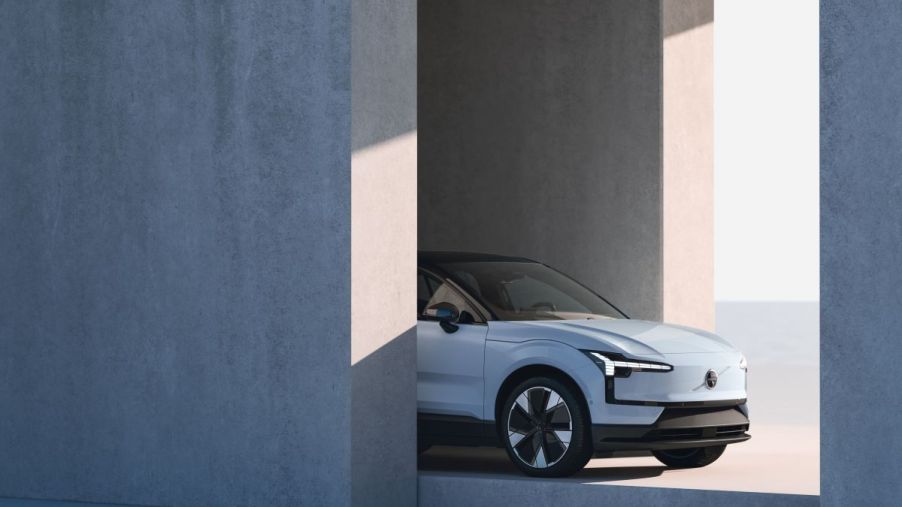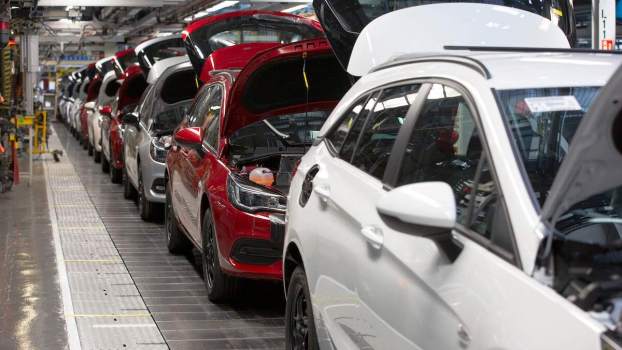
Volvo Is Significantly Lagging Behind Competitors Like Mazda and Subaru
Volvo makes vehicles known for their first-rate safety, Scandinavian design, and luxurious interiors. From the XC40 compact SUV to the S60 Recharge plug-in hybrid executive car, the Swedish automaker produces a range of sleek, high-tech vehicles. However, despite this pedigree, Volvo’s car sales are lagging behind its rivals in the market. Let’s compare Volvo to the competition, review its current lineup, and look at ways it can boost ownership.
Volvo vehicle sales figures in 2023
According to GoodCarBadCar, Volvo sold 59,750 vehicles in the first half of 2023. That might seem like a lot at first glance. However, it’s more than 100,000 units less than the next highest competitor, Daimler, at 169,449.
Let’s look at the company’s current lineup.
The soon-to-be-released EX30 ($34,950) features all-electric driving and a futuristic design. The compact SUV can go 275 miles between charges and rockets from 0-60 mph in only 3.4 seconds. The interior uses recycled materials, and a 12.3-inch tablet provides infotainment functions. That’s one appealing package.
Another upcoming fully-electric model is the EX90. With room for seven and—according to Volvo—the company’s highest safety standard ever, the spacious SUV is a versatile pick. Additionally, with 300 miles of range and fast-charging capability, the EX90 makes switching to an EV easier than ever.
The XC40 compact SUV has two configurations: a mild-hybrid ($36,350) and the all-electric Recharge ($53,550). Both models offer agile handling and abundant driver’s assistance tech. The mild-hybrid comes with FWD (AWD optional), and the Recharge features standard AWD.
For midsize room and interior elegance, the XC60 has seating for five and Scandinavian flair. The mild-hybrid version ($43,450) achieves 25 mpg combined, while the Recharge plug-in hybrid ($57,200) obtains 63 MPGe and has 35 miles of electric range.
As Volvo’s full-size sport utility vehicle, the XC90 brings seven-passenger seating, up to 5,000 lbs of towing, and 85.7 cubic feet of storage. The mild-hybrid version ($56,000) has up to 295 hp, while the Recharge PHEV model ($71,900) comes with 455 hp.
The Volvo C40 Recharge ($55,300) has a striking design inside and out. Along with its all-electric powertrain, the compact crossover uses Google Built-In and a leather-free interior. Not only that, but the C40 has 402 hp, a 226-mile range, and goes 0-60 mph in 4.5 seconds.
Moving to sedans, the Volvo S60 offers a luxurious ride and tailored interior. Its supportive seats make long trips easy, and the available Bowers & Wilkins audio provides crystal-clear playback. The hybrid S60 starts at $41,300, while the Recharge plug-in hybrid version costs $51,250.
The larger S90 sedan brings increased rear passenger space and an elegant appearance. Inside, leather, open-pore wood, and brushed metal create a handcrafted feel. The hybrid S90 ($57,000) gets a solid 33 mpg highway, while the Recharge PHEV S90 ($70,500) obtains 66 MPGe.
The V60 Cross Country ($48,800) and V90 Cross Country ($58,450) offer wagon versatility, ample ground clearance, and all-wheel drive. Both models can handle snowstorms and rough roads, then cruise the highway with efficiency and safety. The two models differ in size, storage space, and towing capacity, with the V90 ahead in all categories.
Lastly, the V60 Recharge plug-in hybrid ($70,550) offers a wagon’s utility and a sports car’s performance. With seating for five and 22.9 cubic feet of rear storage, the V60 has room for any trip. Additionally, with 455 hp, a 41-mile electric range, and a 0-60 mph time of 4.2 seconds, it’s both fast and efficient.
How can the Swedish automaker increase its sales?
According to Scrape Hero, Volvo has 282 dealers in the U.S., while G.M. Authority puts General Motors (GM) dealership locations at more than 7,000. So, it’s no wonder the Swedish company sells far fewer vehicles than some of its competitors.
Therefore, one way Volvo could increase its sales is through more dealerships. While the company’s more of a niche brand, adding dealer locations here and there might positively affect recognition and attract new ownership.
Another option is creating a value-priced model starting under $30,000.
Ford sold more than 64,000 Escape compact SUVs in the first half of 2023. With a starting price of $28,000, the Escape is capable, stylish, and fun. If Volvo created a sub-30,000 dollar SUV with EX30 looks and a gasoline powertrain, they could have a hit on their hands. With many reluctant to switch to EVs, a gas-powered Volvo could be an ideal entry for those new to the brand. With Volvo’s clean design language, a value-driven model would stand out among more standard SUVs. Add in the brand’s history of safety innovations, and customers could come in droves.
Volvo makes unique vehicles with appealing attributes, yet its sales figures are far below the competition. That could be because the Swedish company doesn’t have many dealerships. Or, it could be that the automaker’s lineup is too pricey for some. In any case, the brand continues to offer something different.




